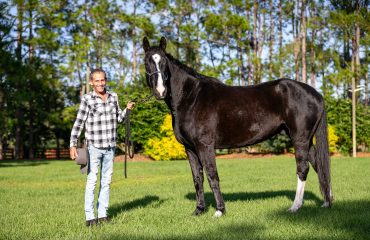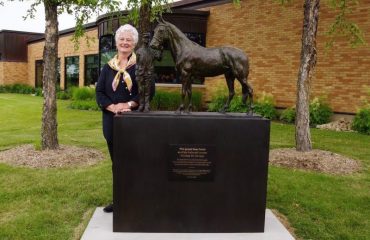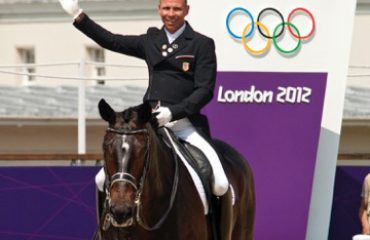By Margie Sugarman
There are many factors that impact how we see ourselves. Numerous studies look at and analyze the elements in our environment that impact self-perception. One element that stands out as consistently impacting teenage girls is socioeconomic status and body image. Body image dissatisfaction is more observable in teens of moderate to high socioeconomic status. Why? The answers have to do with peer acceptance, competition, popularity and wanting to be like what’s observed on TV, in magazines and on the internet. As we get older and mature, elements impacting self-image change. As this occurs, the element of comparison hopefully takes up less space in our lives. Teenagers, however, are caught up in the looking glass of comparison for a prolonged period of time.
A client of mine recently had a school assignment to deliver a speech about something that has made a huge impact on her life. She shared this with me, and I think it’s worthy of sharing here, with total agreement from the 15-year-old author:
Many people perceive horse showing as something elite and almost luxurious. If you aren’t a part of it, you wouldn’t know the less glamorous side of exhibiting. I’ve had the privilege of being able to ride and show my entire life, and I am eternally grateful for every opportunity I’ve had and everything I’ve learned. With that being said, there are parts of horse showing that I don’t look forward to.
Lots of judges observe a round with a bias from the second a horse steps into the ring. This bias is usually the way the rider physically looks as well as the way they present on their horse. This kind of bias, especially for girls, can and does play havoc with body image issues and mental health. Girls experiencing disordered eating is not all that uncommon and is very normalized. Eating disorders have been a problem in top-level showing for years. It comes from the encouragement of this culture, judges and competitors. It needs to start being taken more seriously.
Equitation refers to the rider’s ability to ride the horse underneath them on that day, how clean they can execute a round and how pleasant that round is—essentially, how well a rider can ride. However, when it comes to judging an equitation round, lots of judges have opinions on the rider’s looks instead of on the execution of the ride.
When scoring a round or pinning a class, some judges consider their own personal feelings about what a rider looks like, resulting in a round scoring lower than it should, often because of a rider’s appearance—particularly, weight. This kind of scoring—pinning—is extremely frustrating. You know you’ve put in a beautiful trip. You’re complimented by your trainer as well as other riders, but ultimately place behind the thinner riders whose trips were the same—the only difference being the weight of the exhibitor.
In the equitation ring, we have something known as “the perfect picture.” The perfect picture is all about the rider’s body type and how the rider and their horse complement each other—followed by the performance.
The ideal equitation type is 5’10”, long legs, a long and very lean torso. This is the goal of all the top equitation riders, and to achieve this ideal, many girls start following what we call “the BigEq diet.” The name BigEq diet comes from the prestigious equitation division—Big Equitation-3’6”—the highest level of equitation class Junior riders can compete in. To be able to compete in the Big Eq finals, every single individual must commit as much time as possible to preparing themselves as well as their horses. For lots of girls, this can also mean making sure they look like “the perfect picture.” Consequently, the BigEq diet comes into play.
To say that the BigEq diet is restrictive would be an understatement. The BigEq diet is closer to anorexia then just a restrictive diet. Even the high-caloric days are extremely restrictive. The goal causes many girls to think this “eating” is sustainable and normal. Disordered eating, body dysmorphia and extreme thought patterns are normalized by many girls to reach success in the equitation finals.
Statistics show that 42% of the girls that compete in appearance-based sports struggle with disordered eating and 23.4% ride competitively. It’s more common for girls who compete in aesthetic-based disciplines like hunters, equitation and dressage, as opposed to the jumpers or eventing, to have a poor relationship with food. To be successful in aesthetic-based disciplines, you have to be strong enough to be in complete control. In other words, strong enough to be thin but not too lean. A leaner build may not be strong enough for a tall, big-bodied, big-moving horse. However, a tall, lean build on a big-bodied horse is what wins—especially in the equitation. Professionals and Junior exhibitors say of the equation, “Tall and lean equals a better performance and more wins.” What an incredibly mixed message for a teenage mind.
This is no secret, and many professionals encourage this biased, unhealthy way of thinking, which I have personally experienced more than once. I’m sure that most riders have been exposed to this train of thought—either personally or by witnessing it through a fellow rider.
Growing up showing, this is the culture I was raised with. As I grew, I saw how it was affecting my older friends. Finally, I was at the point where this mindset affected me. This mentality changed the way I thought about myself and the way I felt about riding and showing. Something I once loved doing was the same thing I dreaded doing every day. This culture strips away reality and pushes some to try and become something they physically can’t be. I know. I know because I ended up hospitalized. I then had to work in intensive outpatient. I have continued to work with a therapist. Now, my attitude has changed. I am a good person, a good rider and a good horsewoman. Moreover, I have my passion back. I’m driven to enjoy—even if I’m not the ideal height and weight.
I am me.
I share this because it’s worthy of thought. There are many teenagers who are grappling with this same issue. I thank this teenager for being so open. Moreover, I applaud her for her hard work!













